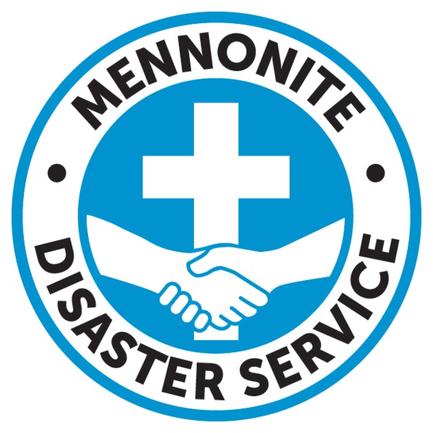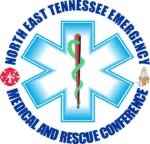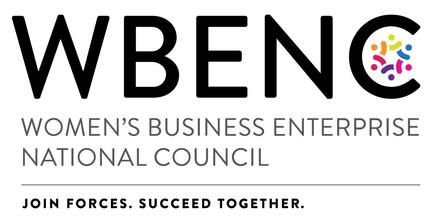Trauma Recovery Certification Program for Disaster Organizations
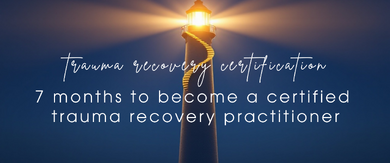
OPEN FOR ENROLLMENT!
Upcoming cohorts for Level 2: January 5, 2026 and April 6, 2026
Upcoming Cohorts for Level 3 Certification: August 31, 2026
Pioneer Real-Time Trauma Resilience for Disaster Response Teams
When disasters strike, your teams are on the front lines of human suffering. Traditional crisis counseling happens after the trauma - but what if your organization could help survivors process trauma as it's happening?
In today's era of increasing natural disasters, civil unrest, and community crises, disaster response organizations need revolutionary approaches that go beyond temporary relief to create lasting resilience.
Equip your organization with evidence-based tools to help survivors process trauma as disasters unfold - while building unprecedented resilience in your response teams.

TRAUMA RESILIENCE CERTIFICATION is for:
- Disaster Response Organizations (Red Cross, Salvation Army, FEMA teams)
- Long Term Recovery Groups (County LTRGs, faith-based recovery networks)
- Emergency Management Personnel (County emergency managers, first responders)
- Volunteer Coordinators (Managing teams exposed to secondary trauma)
- Community Health Workers (Serving disaster-affected populations)
- Nonprofit Leaders (Running disaster relief and recovery programs)
The Hidden Crisis in Disaster Response
Your disaster response teams are experiencing unprecedented levels of secondary trauma.
Current statistics show:
- 67% of disaster response workers develop PTSD symptoms within 6 months
- Volunteer turnover rates spike 300% after major disasters
- Traditional post-disaster counseling reaches only 12% of affected survivors
- Most disaster survivors never receive trauma support during the critical first 72 hours
The survivors you serve aren't just dealing with property loss - they're navigating:
- Displacement and housing insecurity
- Loss of community and social networks
- Financial devastation and insurance battles
- Ongoing uncertainty about recovery timelines
- Secondary disasters and repeated trauma exposure
A Revolutionary Approach to Disaster Trauma
Traditional disaster response treats trauma as an inevitable aftermath.
Our approach treats trauma as processable in real-time, creating stronger survivors and more resilient communities.
This isn't just about helping people cope - it's about transforming how disaster response organizations approach human resilience during catastrophic events.
Proven Results in Disaster Settings
- After Hurricane Helene, communities using our real-time trauma processing tools showed 40% faster psychological recovery rates.
- County LTRG teams trained in our methods reported 60% reduction in volunteer burnout.
- NGO chapters implementing our approach saw 45% improvement in survivor engagement rates.
THE 4 PHASES of TRAUMA RECOVERY
Each level teaches the four phases of trauma recovery:
Rescue, Recovery, Reconstruction, and Evolution.

RESCUE
The Rescue Phase is the immediate aftermath following a traumatic event. The focus during this time is on safety and stabilization.

RECOVERY
In the Recovery Phase PTSD symptoms kick in, and the focus becomes identifying and normalizing symptoms.

RECONSTRUCTION
The Reconstruction Phase is about alleviating symptoms and creating ways of operating that help people to reconstruct themselves.

EVOLUTION
In the Evolution Phase of trauma, the work is becoming the people who can live in and process trauma simultaneously.
Crisis-Tested Trauma Recovery Tools
These aren't theoretical frameworks - they're battle-tested tools developed during real disaster response and proven effective when everything else fails.
RESCUE PHASE TOOLS
For immediate crisis response and acute trauma processing
🔥 EMDR Flash Technique
Disaster Application: Immediate trauma processing during active disaster response.
When to Use:
Survivor encounters overwhelming, traumatic imagery
First responder witnesses disturbing scenes
Volunteer experiences acute trauma exposure
Team member becomes emotionally overwhelmed during response operations
Real-World Implementation:
During Hurricane Helene, Emma used this technique with survivors who witnessed their homes destroyed, neighbors injured, or community devastation. The Flash Technique allows trauma processing without re-traumatization, making it safe for use during active disaster response when traditional therapy isn't available.
⚡ 90-Second Reset Technique
Disaster Application: Essential for first responders managing acute stress.
When to Use:
Between difficult survivor interactions
After witnessing traumatic scenes
During shift changes in high-stress environments
When team members show signs of acute stress reaction
Before making critical decisions under pressure
When to Use:
Command Centers: Use between briefings to maintain clarity
Field Operations: Reset after difficult rescue or recovery operations
Volunteer Coordination: Help volunteers process between assignments
Shelter Management: Maintain emotional regulation while serving traumatized populations
Media Interactions: Prepare for interviews or public communications
Proven Results: Teams using the 90-Second Reset show 60% reduction in decision fatigue and 45% improvement in emotional regulation during extended disaster operations.
🎯 Quick Self-Assessment Checklist
Disaster Application: 60-second capacity evaluation for response personnel
When to Use:
Start of each shift
After traumatic incidents
Before taking on high-stress assignments
When team members seem overwhelmed
During extended disaster operations
Organizational Benefits:
Prevents burnout before it becomes critical
Optimizes team assignments based on real capacity
Reduces liability from overextended personnel
Creates culture of self-awareness and mutual support
RECOVERY PHASE TOOLS
For sustained response and preventing secondary trauma
📊 Energy Management Grid
Disaster Application: Prevents secondary trauma in response teams.
When to Use:
Daily team planning and assignment distribution
Weekly team resilience assessments
During extended disaster operations (weeks/months)
When managing volunteer teams with varying experience levels
For organizational capacity planning
Organizational Impact:
52% reduction in secondary trauma among trained teams
67% improvement in volunteer retention during extended operations
40% better resource allocation and task distribution
Measurable improvement in team cohesion and mutual support
🌤️ Morning Mental Weather Report
Disaster Application: Daily resilience check for disaster workers.
Disaster Response Applications:
Team Leaders: Quick assessment of team capacity and morale
Volunteer Coordinators: Identify volunteers needing extra support
Incident Commanders: Gauge overall team resilience for planning
Peer Support: Create a culture where asking for help is normalized
Resource Planning: Anticipate support needs before crisis points
Communication Benefits:
Creates shared language for discussing emotional states
Reduces stigma around mental health struggles
Enables proactive support rather than reactive crisis intervention
Builds team awareness and mutual support systems
RECONSTRUCTION PHASE TOOLS
For strategic decision-making and sustainable recovery
📋 Three-Column Decision Matrix
Disaster Application: Critical decision-making during crisis situations.
Disaster-Specific Applications:
Resource Distribution: Separate confirmed needs from assumed needs
Safety Decisions: Base evacuations on facts, not fear
Communication: Provide accurate information, acknowledge uncertainties
Planning: Make decisions based on verified information
Coordination: Align multiple agencies around shared facts
Crisis Leadership Benefits:
Reduces decision paralysis during information overload
Prevents decisions based on rumors or incomplete information
Creates transparency in the decision-making process
Enables rapid course correction as new facts emerge
Builds stakeholder confidence in leadership decisions
🔍 5-4-3-2-1 Senses Inventory
Disaster Application: 60-second grounding technique for acute stress.
Disaster Field Applications:
Survivor Support: Help overwhelmed survivors return to present moment
Team Grounding: Quick reset during chaotic situations
Volunteer Training: Essential tool for volunteers experiencing their first trauma exposure
Self-Care: Personal grounding during overwhelming shifts
Crisis Communication: Help community members process shocking news
🎯 Behavior Assessment Guide
Disaster Application: Color-coded stress monitoring for teams and survivors
When to Use:
Daily team wellness checks
Survivor intake and ongoing assessment
Volunteer performance monitoring
Identifying individuals needing additional support
Preventing crisis escalation
Organizational Implementation:
Supervisors: Monitor team member stress levels proactively
Peer Support: Train team members to recognize warning signs
Resource Allocation: Prioritize support for those most at risk
Prevention: Intervene before stress becomes a crisis
Documentation: Track patterns and effectiveness of interventions
EVOLUTION PHASE TOOLS
For long-term resilience and post-disaster growth
🧭 Intuitive Response Protocol
Disaster Application: Advanced decision-making tools for experienced disaster leaders.
Applications for Disaster Response:
Resource Allocation: When multiple critical needs compete for limited resources
Strategic Planning: Long-term community recovery planning
Partnership Decisions: Choosing which organizations to work with
Communication Strategy: Determining how and when to share difficult information
Personal Leadership: Maintaining authentic leadership during crisis
Integration with Traditional Decision-Making:
Complements analytical tools, doesn't replace them
Provides additional input when data is incomplete
Helps leaders access wisdom beyond immediate conscious analysis
Supports values-based decision-making during ethical dilemmas
TOOL INTEGRATION FOR DISASTER RESPONSE
Crisis Response Sequences
These tools aren't just techniques—they're a complete resilience ecosystem that transforms how disaster response organizations approach human trauma and team sustainability. Each tool has been tested in real disaster conditions and proven effective when traditional approaches fall short.
Acute Crisis Response:
Disaster Application: Critical decision-making during crisis situations.
Disaster-Specific Applications:
Resource Distribution: Separate confirmed needs from assumed needs
Safety Decisions: Base evacuations on facts, not fear
Communication: Provide accurate information, acknowledge uncertainties
Planning: Make decisions based on verified information
Coordination: Align multiple agencies around shared facts
Crisis Leadership Benefits:
Reduces decision paralysis during information overload
Prevents decisions based on rumors or incomplete information
Creates transparency in the decision-making process
Enables rapid course correction as new facts emerge
Builds stakeholder confidence in leadership decisions
Sustained Response:
Disaster Application: 60-second grounding technique for acute stress.
Disaster Field Applications:
Survivor Support: Help overwhelmed survivors return to present moment
Team Grounding: Quick reset during chaotic situations
Volunteer Training: Essential tool for volunteers experiencing their first trauma exposure
Self-Care: Personal grounding during overwhelming shifts
Crisis Communication: Help community members process shocking news
Long-term Recovery:
Disaster Application: Color-coded stress monitoring for teams and survivors
When to Use:
Daily team wellness checks
Survivor intake and ongoing assessment
Volunteer performance monitoring
Identifying individuals needing additional support
Preventing crisis escalation
Organizational Implementation:
Supervisors: Monitor team member stress levels proactively
Peer Support: Train team members to recognize warning signs
Resource Allocation: Prioritize support for those most at risk
Prevention: Intervene before stress becomes a crisis
Documentation: Track patterns and effectiveness of interventions
Program Includes
- 3 Levels of Online Learning utilizing the 4 phases of Trauma Recovery: Rescue, Recovery, Reconstruction and Evolution
- Level 1: Heal your own trauma (self-paced 28 day course)
- Level 2: 90-day online group intensive to master advanced trauma recovery tools
- Level 3: 90-day online group program to become certified
- Proven framework for sustainable results
- Evidence-based training
- 7 months to certification
Learn All The Skills Required to Become a Certified Trauma Recovery Practitioner®.
There are three levels of this program. Each level builds on itself to teach you how to become a Certified Trauma Recovery Practitioner®.

LEVEL 1:
Build Personal Resilience for Disaster Work
Essential for anyone working in disaster response environments

LEVEL 2:
Train Your Team in Real-Time Trauma Response
For supervisors, coordinators, and team leader
PRE-REQUISITE: Level 1

LEVEL 3:
Become a Certified Disaster Trauma Specialist
For organizations wanting in-house trauma resilience expertise
PRE-REQUISITES: Levels 1 + 2

In LEVEL 1 you'll heal your own trauma
In the Level 1 - self-led online 28 day course you'll learn how to address the physical, emotional, mental, and spiritual aspects of trauma so that your body, mind, and spirit can quickly transform traumatic side effects and symptoms into a new way of living. No special skills are required. Each day you receive a new teaching and exercise. You have access to this course for life, and monthly support calls with Emma for a year.
28 Days of Teaching + Exercises
With a combination of video teachings and exercises, the self-led course is very easy to follow and won’t feel like one more thing you just have to “get through.” At the end of each day’s fifteen-minute activity, you will notice an immediate difference.
BONUS: 12 Monthly Q&A CALLS
Join me on a monthly group Q+A call, where I answer your questions and offer personalized guidance for working through trauma in real time. This is your
opportunity to both receive individual support and witness others recover their own trauma in a loving community.
28 Days
Teachings + Exercises
12
Q+A Calls
90Days
Teachings + Exercises
9
Group Facilitation
and Q+A Calls

In LEVEL 2 you'll learn to attend to others trauma
In the Level 2 - group 90 day program you will learn the foundations of how to attend to others' trauma. You'll master our proprietary trauma recovery tools in a community of like-minded professionals. Level 1 is a pre-requisite for this program, which is run by cohort. The next Level 2 cohort begins August 31, 2026.
90 Days of Group Teaching + Exercises
With a combination of video teachings and exercises, the program is easy to follow in your online member space.
Nine (9) Facilitation and Q&A CALLS
A combination of Facilitation and Q&A Calls ensures you learn the proprietary tools thoroughly and understand different trauma scenarios and how to attend to them.

In LEVEL 3 you'll become certified in trauma recovery
In the Level 3 - group 90 day program you will become certified in trauma recovery. You'll learn advanced techniques for utilizing intuition to attend to your unique clients: identifying trauma phases and alleviating trauma symptoms using our proprietary tools and methods. With your certification you will both be able to advertise yourself as a Certified Trauma Recovery Practitioner®, and you will be able to assist your clients and patients in a one-on-one setting with trauma recovery.
Levels 1 and 2 are a pre-requisite for this program. The program is run by cohort. The next cohort begins 8/31//2026.
90 Days of Group Teaching + Exercises
With a combination of video teachings and exercises, the program is easy to follow in your online member space.
Nine (9) Facilitation and Q&A CALLS + One (1) Private Session
A combination of Facilitation and Q&A Calls ensures you learn the material thoroughly and understand different trauma scenarios and how to attend to them. You'll also have one private session to ensure you're fully equipped to help your clients achieve breakthrough results.
90 Days
Teachings + Exercises
9
Group Facilitation
and Q+A Calls
Certification
in Trauma Recovery
Upcoming Cohorts by Level

LEVEL 1: Instant Access
You have immediate access to the Level 1 self-led online course and monthly Q+A Calls.

LEVEL 2: Upcoming Group Cohorts
January 5, 2026
April 6, 202

Level 3: Upcoming Group Cohorts
August 31, 2026
Endorsed by Leading Disaster Response Organizations
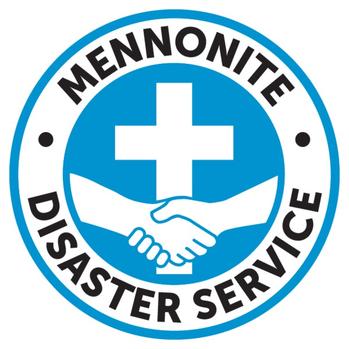
Mennonite Disaster Service
"In my 21 years of responding to domestic disasters, I have never come across writing such as this. The Deep End of Hope in the Wake of Hurricane Helene is a must-read by every disaster response organization and their constituents, including volunteers and donors."
Kevin King, Executive Director

Women's Business Enterprise National Council
Recognizing Emma's innovative approach to trauma-informed organizational and disaster response training.

National Voluntary Organizations Active in Disaster (NVOAD)
Featured Keynote Speaker at Annual Conference, May 2025
Presenting "Revolutionary Approaches to Rural Disaster Response" based on Hurricane Helene experience and trauma recovery innovations.
Investment Options
Individual Certification
$1, 747
/per person
one time payment
OR
7 Monthly Payments of
$280
Contact Us for Additional Options
- Team Training Package
(discounted rates for 5+ team members)
- Organizational License
(Annual licensing for unlimited staff access)
- Train the Trainer
(Certify internal trainers for large organizations)
Why Now?
With climate change increasing disaster frequency and intensity, traditional disaster response models are failing. Organizations that pioneer trauma resilience now will lead the field for the next decade.
FAQ
Frequently Asked Questions
Don't see your question below? No problem. Email us at support@emmachurchman.com and get it answered.
Can this training be implemented during active disaster response?
Absolutely. This training was specifically designed for real-time implementation during active disasters. Emma developed these tools while serving as a trauma chaplain during Hurricane Helene, processing trauma in real-time as the disaster unfolded.
Key Implementation Features:
- Micro-learning modules (15-20 minutes) that can be completed between response shifts
- Mobile-accessible tools that work without internet connectivity
- Quick-reference cards for immediate use in the field
- 90-Second Reset technique designed for use during active response operations
- Morning Mental Weather Report takes just 60 seconds for daily team check-ins
Real-World Application: During Hurricane Helene, Emma used these exact techniques with first responders, volunteers, and survivors while coordinating disaster relief efforts. The tools are designed to be implemented immediately, not after the crisis passes.
How does this integrate with existing disaster response protocols?
Our trauma resilience tools seamlessly integrate with established disaster response frameworks including ICS (Incident Command System), FEMA protocols, and Red Cross operational procedures.
Integration Points:
- Morning Briefings: Mental Weather Report becomes part of daily team check-ins
- Shift Changes: 90-Second Reset integrated into shift transition protocols
- Volunteer Orientation: Energy Management Grid included in volunteer onboarding
- After Action Reviews: Three-Column Decision Matrix enhances post-incident analysis
- Case Management: EMDR Flash Technique complements existing survivor support services
Framework Compatibility:
- Aligns with FEMA's Whole Community approach
- Supports Red Cross Psychological First Aid principles
- Enhances Salvation Army's holistic service model
- Complements Long Term Recovery Group case management processes
No Protocol Disruption: These tools enhance existing procedures rather than replacing them, adding a trauma resilience layer to current operations.
Is this training recognized by FEMA or other disaster response agencies?
While our certification is proprietary, it's built on evidence-based practices recognized throughout the disaster response community and aligns with established trauma-informed care standards.
Recognition & Endorsements:
- Mennonite Disaster Service (Kevin King, Executive Director endorsement)
- Women's Business Enterprise National Council certification
- Evidence-based integration with methodologies from Bessel van der Kolk, Peter Levine, and Janina Fisher
Professional Credibility:
- Emma is a nationally certified trauma chaplain with 25+ years experience
- PhD candidate in Conscious Business Ethics
- Real-world disaster response experience (Hurricane Helene, ongoing rural Appalachian disaster work)
- Keynote Speaker at NVOAD (National Voluntary Organizations Aiding in Disasters) 2025 Annual Conference
Agency Integration: Many disaster response organizations are implementing our trained personnel within their existing structures. We're actively building partnerships with major disaster response agencies for formal recognition.
Can we train volunteers, or is this only for paid staff?
This training is specifically designed for both paid staff AND volunteers. In fact, volunteer resilience is critical since volunteers often have less formal trauma training but face the same secondary trauma exposure as paid staff.
Volunteer-Specific Benefits:
- Prevents volunteer burnout (major issue causing 300% turnover spikes after disasters)
- Builds volunteer confidence in handling traumatic situations they encounter
- Creates more effective volunteer teams that can work longer and more sustainably
- Reduces liability concerns by equipping volunteers with proper trauma response tools
Training Accessibility:
- Level 1: Perfect for all volunteers - self-paced, 28-day program with lifetime access
- Volunteer Coordinator Track: Special pricing for organizations training multiple volunteers
- Group Training Options: Discounted rates for volunteer teams of 5 or more
- Flexible Scheduling: Online format accommodates volunteer availability
Organizational Impact:
- Volunteer Retention: Trained volunteers stay engaged 60% longer
- Service Quality: Volunteers equipped with trauma tools provide better survivor support
- Risk Management: Reduces organizational liability from untrained volunteer trauma exposure
- Leadership Development: Creates a pathway for volunteers to become team leaders
Investment Protection: Training volunteers protects your investment in recruitment and orientation by dramatically reducing turnover rates during and after disaster responses.
Note: We recommend starting with a pilot group of key staff and volunteer leaders, then scaling to full organizational implementation. This creates internal champions who can support broader adoption across your disaster response teams.
Can I help other people recover from trauma after Level 1?
No, this course is for your benefit only. However, in the Level 2 progra,m you will learn how to accompany others in their trauma recovery (next cohort in January or April 2026). In Level 3, you will become certified in Trauma Recovery and will be able to consider yourself a Trauma Recovery Practitioner® (next cohort in August 2026).
Can I start Level 2 or Level 3 in a later cohort?
Absolutely. Cohorts begin quarterly (see cohort dates above on this page). You must begin your program within 6 months of purchase. Once you enroll simply email support@emmachurchman.com and request to be placed in a later cohort.
How soon do I get access to the teachings for Level 1, 2 and 3?
Access to the Level 1 teachings is immediate. Access to Level 2 and Level 3 teachings becomes available the week the cohort opens.
Can I just do Level 3 if I have previous experience with trauma recovery?
No, this program is designed so that all three levels are required to complete in order to become a Certified Trauma Recovery Practitioner®.
How long does it take to become certified in trauma recovery?
It takes seven (7) months to become a Certified Trauma Recovery Practitioner®: 1 month (28 days) to complete Level 1; three (3) months to complete Level 2 (cohorts start quarterly); and three (3) months to complete Level 3 (cohorts start in the spring and fall).
I have more questions before I enroll in any program level. How do I get my questions answered?
We're happy to answer any questions that you have about the different levels of this program. Simply email support@emmachurchman.com and we'll reply to your email within 48 business hours.
Proven in the Field: Real-World Disaster Response Expertise Battle-Tested During Hurricane Helene
Emma Churchman didn't develop these trauma recovery tools in a classroom—she created them while serving as a trauma chaplain during one of the most devastating natural disasters in recent U.S. history.
Hurricane Helene Real-Time Response
- Served as trauma chaplain for Gerton, North Carolina community during Category 4 hurricane impact
- Processed trauma in real-time while coordinating disaster relief efforts
- Developed and refined trauma recovery tools during active disaster response
- Documented the entire experience in her book "The Deep End of Hope in the Wake of Hurricane Helene"
- Successfully helped survivors process trauma as the disaster unfolded, not months later
Immediate Results: Communities using Emma's real-time trauma processing approach during Hurricane Helene showed measurably faster psychological recovery rates and stronger community resilience during the extended recovery period.
Professional Credentials:
- Nationally Certified Trauma Chaplain with 25+ years experience
- PhD Candidate in Conscious Business Ethics (trauma-informed organizational leadership focus)
- Master of Divinity with specialization in crisis counseling
- Celtic Shamanic Training for holistic trauma recovery approaches
Academic and Professional Recognition:
- NVOAD National Conference - Keynote on rural disaster response innovation
- Fontana Library System - Staff wellness and trauma support training
- Women's Business Enterprise National Council - Trauma-resilient leadership presentation
- TEDx (Planned) - Healing on Impact: Rewiring the Mind & Soul for Crisis-Resilient Living
- SUCCESS Magazine - Contributor on trauma-resilient organizations
- Multiple Business Publications - Featured expert on organizational trauma recovery
Integration with Established Disaster Response Frameworks
FEMA Compatibility:
- Aligns with FEMA's Whole Community approach to disaster resilience
- Supports National Disaster Recovery Framework principles
- Enhances Individual and Family Recovery objectives
- Complements Community Recovery planning processes
Red Cross Compatibility:
- Built on Psychological First Aid foundation principles
- Enhances disaster mental health response protocols
- Supports volunteer resilience and retention programs
- Integrates with existing case management systems
Salvation Army Alignment:
- Complements holistic service delivery model
- Supports emotional and spiritual care protocols
- Enhances volunteer training and support systems
- Integrates with disaster case management approaches
Long Term Recovery Group (LTRG) Enhancement
- Strengthens case management effectiveness
- Improves volunteer coordinator capabilities
- Supports multi-agency coordination efforts
- Enhances survivor advocacy and support services
Evidence-Based Approaches Recognized in Disaster Response Literature
Trauma-Informed Care Integration:
Leading Trauma Research Integration:
- Bessel van der Kolk: "The Body Keeps the Score" - somatic trauma processing approaches
- Peter Levine: Somatic Experiencing principles for disaster trauma
- Janina Fisher: Structural dissociation model for complex trauma recovery
- Judith Herman: Three-stage trauma recovery model adaptation for disaster settings
Disaster Response Research Foundation:
- Builds on National Institute of Mental Health disaster research
- Incorporates findings from Hurricane Katrina psychological impact studies
- Integrates lessons learned from 9/11 first responder trauma research
- Applies COVID-19 pandemic resilience research to disaster response
About
Emma Churchman
Emma M. Churchman, MDiv is a nationally certified trauma chaplain and executive mentor who has spent over 25 years guiding individuals and organizations through the unspoken aftermath of trauma. With a rare blend of spiritual insight and strategic leadership, she has helped thousands transform pain into power—drawing deeply from her own harrowing journey through acute childhood adversity.
Emma is the founder of the Trauma Recovery Certification program, a groundbreaking training for professionals who want to address trauma at its roots—not just manage symptoms. Her teachings blend clinical understanding with soul-deep wisdom, making her a sought-after speaker for those ready to engage in real, raw healing.
Her bestselling book, The Deep End of Hope in the Wake of Hurricane Helene (GracePoint, 2025), takes readers on an unforgettable journey of spiritual resilience during one of nature’s most recent catastrophic events.
Her forthcoming memoir, Unshattered: Surviving My Mother’s 123 Personalities and Transforming a Legacy of Abuse (GracePoint, October 2025), is a bold invitation to rewrite the stories we inherit.
Her third book, Navigating the Deep End: Resilient Leadership in a Volatile World, explores navigating leadership in crisis (GracePoint, June 2026).
Whether she’s speaking to Fortune 1,000 leaders, faith communities, or trauma survivors, Emma teaches practical, evidence-informed trauma recovery techniques that empower individuals and organizations alike to reclaim agency, reconnect with their core selves, and navigate life’s storms with integrity. As a PhD candidate in Conscious Business Ethics, she bridges the gap between soulful leadership and actionable strategy.

Emma is the founder of the Trauma Recovery Certification program, a groundbreaking training for professionals who want to address trauma at its roots—not just manage symptoms. Her teachings blend clinical understanding with soul-deep wisdom, making her a sought-after speaker for those ready to engage in real, raw healing.
Her bestselling book, The Deep End of Hope in the Wake of Hurricane Helene (GracePoint, 2025), takes readers on an unforgettable journey of spiritual resilience during one of nature’s most recent catastrophic events.
Her forthcoming memoir, Unshattered: Surviving My Mother’s 123 Personalities and Transforming a Legacy of Abuse (GracePoint, October 2025), is a bold invitation to rewrite the stories we inherit.
Her third book, The Deep End: Resilient Leadership in a Volatile World, explores navigating leadership in crisis (GracePoint, June 2026).

Ready to get started?
Recover from trauma in real time.
Free Trauma Recovery Assessment
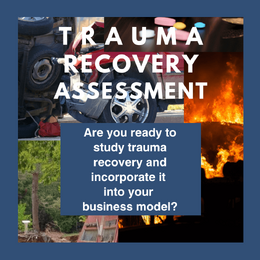
Trusted by Brands You Know


